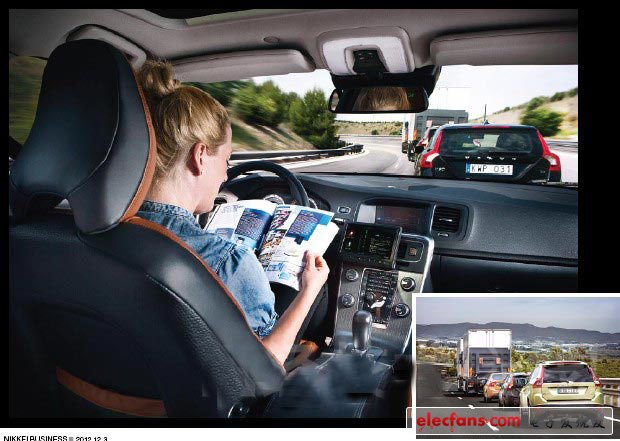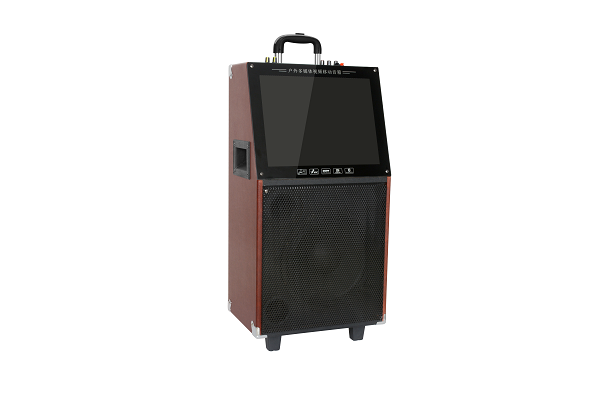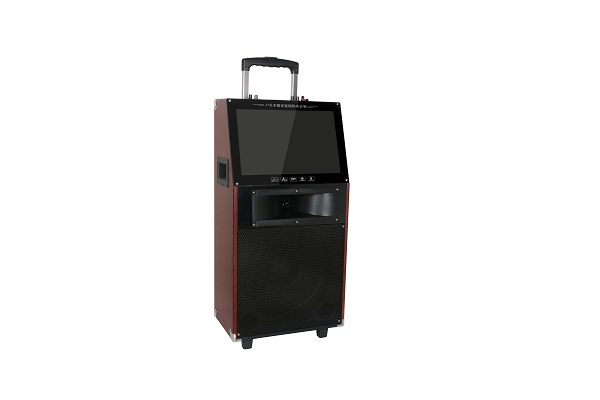The secret of driverless cars, who controls the steering wheel?
The driver sits in the driver's seat and reads the book, and the car drives automatically. This experiment was carried out on a highway in Spain with ordinary vehicles running around. What future will advances in safety technology bring to cars and humans?
Inadvertently glancing at the car driving in the adjacent lane, the driver saw his hand away from the steering wheel and was digging into the magazine. In the summer of 2012, such a shocking sight appeared on the highway in Spain.

This is an on-road test on near future autonomous driving. The project is called the "SARTRE project" and is jointly implemented by seven European companies including Volvo. SARTRE is an abbreviation of "Safe Road Trains for the Environment".
As the name implies, highway convoys let cars line up like connected trains. In this test, one truck and three Volvo cars followed the lead truck driven by a professional driver. The maximum speed reaches 90km per hour, and sometimes the workshop distance is less than 4m.
When joining a highway convoy, the driver first needs to press a button to indicate that he wants to participate. Autonomous driving also requires corresponding legal support. It is currently envisaged that participants pay the driver of the leading vehicle.
If autonomous driving like the SARTRE project can be achieved, it will bring many benefits to people.
First of all, for the driver, the saved driving time can be used for work and study, and it can also reduce fatigue at work. The air resistance will be reduced when the vehicle is lined up, so the fuel efficiency can also be increased by 10-20%. In addition, since the speed of each vehicle is uniform, traffic jams are not likely to occur.
"Autonomous driving" has always been regarded as a scene in science fiction movies. To find out what technology autopilot relies on, it is necessary to understand the latest safety technology in automobiles. Autonomous driving is the result of cutting-edge technology developed for safety purposes such as "avoid collisions" and "maintain lanes".
Use cameras and radar to avoid collisions
The anti-collision technology, which was originally only for some high-end models, has now been equipped with mass-produced vehicles. The anti-collision system first uses the on-board camera and radar to detect the relative speed and distance from other vehicles and obstacles, then calculates how much time is left until a collision occurs, and prompts the driver to take evasion through warning sounds when a collision is about to occur operating. Even when it is too late to avoid, it will automatically implement full braking to prevent collision.
In Japan, it is Fuji Heavy Industries that paves the way for the spread of autonomous driving in mass-produced vehicles. The company set the anti-collision technology "EyeSight" as an option in its main model "Legacy" at a reasonable price of 100,000 yen, and later expanded its support model. Now, Mitsubishi Motors is also equipped with the same technology on the "Outlander".
Overseas manufacturers have also launched an offensive in this area. Among them, Volvo was the first to make automatic anti-collision technology practical in Japan, and Volkswagen also equipped anti-collision technology as a standard on the small car "up!" That was launched in October.
Each company differs in the specific deployment method of anti-collision technology. For example, Fuji Heavy Industries calculates the distance between the vehicle and the obstacle based on the deviation of the left and right images based on the stereo camera.
Volvo uses a millimeter-wave radar that is not easily affected by the weather in combination with a monocular camera to radiate radio waves in the millimeter-wave band (wavelength 1mm to 1cm, frequency 30 to 300 GHz. 1 GHz = 1 billion Hz) from the vehicle head Calculate the distance based on the time it takes for an obstacle or the like to return. In the street, the movement of 10 pedestrians can be analyzed simultaneously through the images of the monocular camera.
The maximum speed at which vehicles can avoid collisions with pedestrians is mostly 30-35km. Each company is promoting support for high-speed driving. Honda has developed a technology that can stop vehicles before collision at a speed of 60km per hour by improving the sensitivity of millimeter-wave radar.
Nissan's goal is to further promote the progress of anti-collision technology. Depressing the brake pedal with full force by foot alone cannot completely prevent the sudden appearance of pedestrians. Therefore, Nissan has developed a technology to automatically turn the steering wheel in the direction opposite to the obstacles that appear.
Cars equipped with this technology use the on-board camera to identify the driving lane and obstacles in real time, and activate the auto steering function only when it is judged that the vehicle can escape to a safe area. The development goal is to achieve practicality within 3 to 5 years.
In addition, the technology to prevent accidents by detecting the situation behind the vehicle is also smoothly advancing to practical use. For example, Nissan and Toyota have developed a technology that uses sonar (ultrasonic) sensors to detect obstacles in the direction of the vehicle's forward direction. Even if the accelerator pedal is mistakenly applied to the brake pedal when parking, the technology can prevent collisions. Equipped with new models. In addition, Mazda's "ATENZA", which was launched in November, is equipped with a technology that notifies drivers who want to change lanes of a collision when it detects that a vehicle is approaching from behind the left and right lanes.

Both of the above technologies analyze the situation of the vehicle and surroundings by using a combination of cameras, radar and image processing semiconductors, etc., and based on the results of the analysis, warn the driver and take emergency actions to avoid accidents.
The next stage will be based on the analysis results to achieve a more advanced linkage of the brake, engine and steering wheel. The goal is to achieve automatic driving that keeps track of the vehicle in front and tracks even if the driver does not take any action. Volvo announced that it plans to launch cars equipped with this technology in 2014, which can be used in minor traffic jams with a maximum speed of 50km per hour.
The technology necessary for autonomous driving is gradually being completed. In the future, after finding the problem through trial and error and meeting the legal requirements, fully automatic driving like the SARTRE project will no longer be a dream.
Our hot selling products: Trolley Wooden Speaker with LED Screen. You can also call it outdoor dancing speaker, Portable Karaoke Speaker. Wooden enclosure, stylish and portable. High quality sound, built-in high-volume vrla battery, more durable and better sound quality. You can use it enjoy webcast, movie, music, and also you can use it to accompany when you dance. Especially it is a Karaoke systems, you can sing everywhere with your friend if you like. It can bring you unexpected happiness. We are looking forward to establish win-win business relationships with you. Warm welcome you to our company and introduction this Trolley Speaker Systems to you!


Trolley Wooden Speaker
Trolley Wooden Speaker,Trolley Speaker With Battery And Wheels
Shenzhen New Wonderful Technology Co., Ltd. , https://www.sznewwonderful.com
